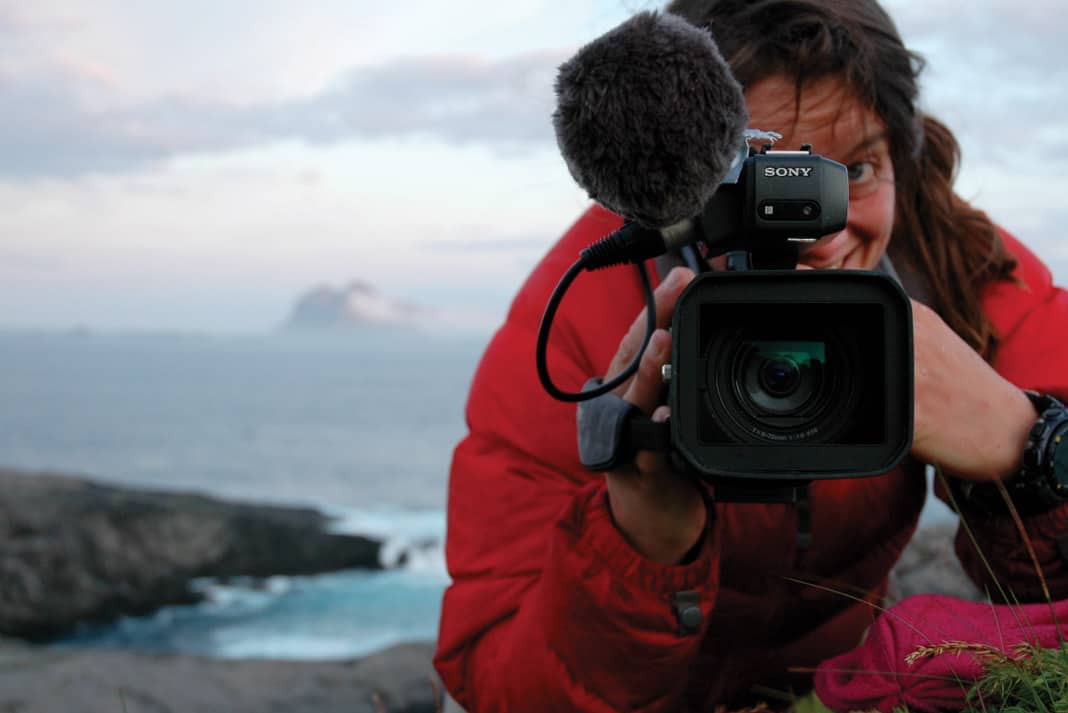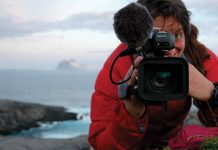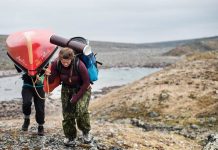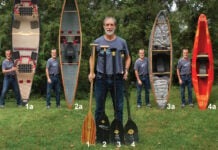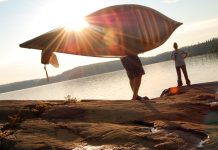High-quality video cameras are cheaper than a kayak paddle these days, and everyone is filming their own adventures. Unfortunately, few paddlers ever wade through the hours of monotonous footage to create a film anyone other than their mothers would enjoy. Multi-award winning filmmaker Justine Curgenven shares these simple tips on how to shoot a whitewater kayaking movie that will have your friends looking over your shoulder.
Create a great whitewater kayaking movie
1) Study up on your paddling adventure
Before you leave the house know what you want to shoot. Watch lots of kayaking films—shorts, feature-length films, amateur attempts, and professional jobs. What do you like about those films, and what just drags on? Create a shot list and storyboard so you have a solid plan when you actually get on the water.
2) Tell a story
Gorgeous scenery is lovely but a human element will connect viewers with your film. Tell the story of what you are doing to the camera. Film yourself and others describing where you are, what you are doing and how you feel.
People love to see emotions on film—especially nerves, stress, and excitement. Unless someone is doing a front loop on the beach, you can film the action or scenery afterward.
3) Manage your filming kit
Nothing is more frustrating than missing a fantastic shot because of a dead battery or a full SD card. Double-check everything is ready to go before you arrive at the action.
On every expedition, I take four spare batteries for each camera. If I will be away from power for two weeks or more then I take a solar panel to charge batteries. Beware of water on your lens—it will ruin your shot. Use a lens cloth to wipe off any drops before shooting.
4) Get different angles
POV footage from a camera mounted on your kayak is great but only in doses of 10 to 20 seconds. Your shot list should include a variety of angles and perspectives to hold interest longer. Get shots of people paddling towards you, side on and away.
Film a mix of wide shots, which show the surrounding landscape, close-ups of action and mid-shots in between. Climb a hill, put your camera on the beach and get low in the water for interesting perspectives. A tripod will go a long way to making your whitewater kayaking movie look pro.
5) Hold the shot
Compose a shot where the action happens within the frame, hit record and hold the camera still for 10 seconds. Cut too soon and you’ll create a headache for yourself in the editing suite. If you analyze film and television, you’ll be amazed at how many static shots there are. Mix in some stable, slow panning for good measure.
6) Get quality sound
Poor sound is an instant turn-off. Get close to the person talking and choose a quiet location. Even small waves on a beach are very, very loud on a camera.
Put your back to the wind and get as far away as possible from the sea. Use earphones to hear what you are recording. Best yet: Buy a cheap microphone that plugs into the camera and will improve your sound immensely.
7) Be brutal when editing
When it comes to editing, remember that longer isn’t better. In fact, the average attention span on YouTube lasts just seconds. For my most recent film, Kayaking the Aleutians, I pared 50 hours of footage into a 55-minute film. That’s 95 percent left on the cutting room floor. If the clip isn’t crucial to your whitewater kayaking movie—or if you’ve asked yourself, “Will people be interested in this?”—there’s no doubt. Cut it.
Justine Curgenven has been awarded top prizes at the Reel Paddling Film Festival multiple times. Find her online at www.cackletv.com.
Paparazzi in Gore-Tex. | Feature Photo: Justine Curgenven



